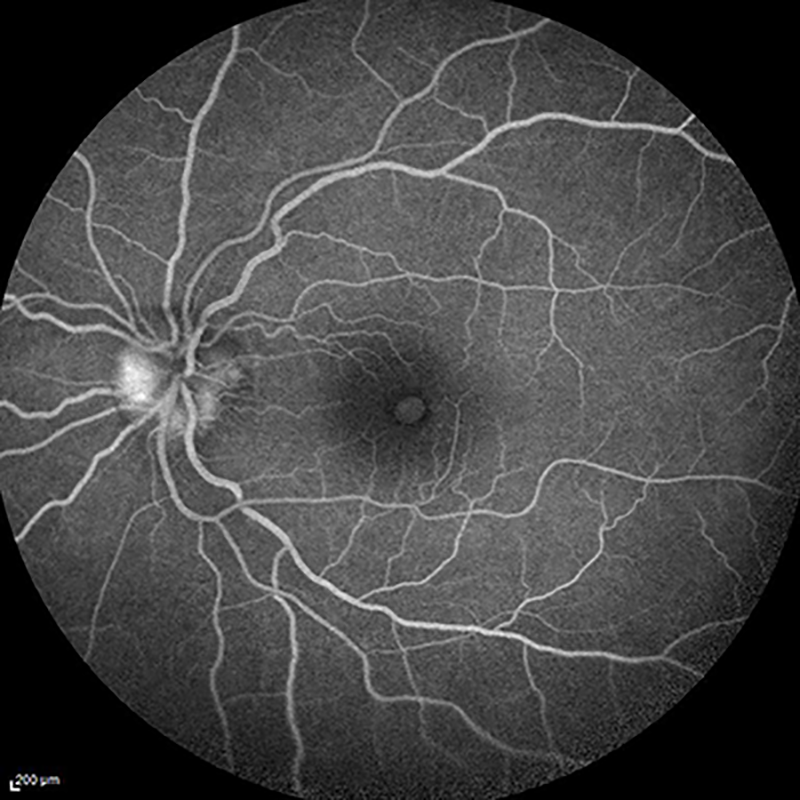Ischemic Optic Neuropathy
 fluorescein angiogram of ischemic optic neuropathy with macular hole
fluorescein angiogram of ischemic optic neuropathy with macular hole
What is Ischemic Optic Neuropathy?
The optic nerve is a structure that connects the eyes to the brain, giving us the ability to interpret images. Ischemic Optic Neuropathy (ION) is a condition where blood flow to the optic nerve is either blocked or reduced, causing damage to the nerve. This damage occurs because important nutrients and oxygen are no longer delivered to the optic nerve.
What are the symptoms of ION?
With ION, you can suddenly lose vision in one or both of your eyes. This can affect your central or peripheral vision, or both. Usually, ION is not painful. Any visual loss from ION is usually permanent.
Sometimes, if blood flow is reduced (but not completely interrupted), your vision can suddenly darken for a few seconds to minutes, then return to normal. This phenomenon can eventually worsen to become Ischemic Optic Neuropathy, therefore if you have these symptoms, it is very important to call your primary care doctor or ophthalmologist as soon as possible.
What causes Ischemic Optic Neuropathy?
We do not always know why the reduced blood flow occurs, however some individuals with certain conditions are more likely to develop ION:
- Patients over the age of 40
- History of high blood pressure
- History of high cholesterol
- Diabetics
- History of obstructive sleep apnea
- Smokers
- History of glaucoma
- History of migraine headaches
How is this condition diagnosed?
Your eye specialist will perform a dilated exam to look for signs of ION and check for swelling of the optic nerve and blood vessels in the back of the eye. Your peripheral (side) vision may be measured, as well as a blood test and/or biopsy of an artery in the temple to diagnose temporal arteritis.
Temporal arteritis:
Patients with temporal arteritis have a very high chance of losing vision in the other eye unless treatment is started. Treatment involves using steroids at a high dose. The anti-inflammatory effects of the steroids decrease the risk of losing vision in the other eye. The vision usually stabilizes once steroids are started. However, some people can have a small degree of vision improvement with steroids. For those with severe vision loss in both eyes, some peripheral (side) vision can often be preserved. Peripheral vision generally allows you enough sight to function at home independently, and special visual devices are available which can help you to continue many daily activities.
How is Ischemic Optic Neuropathy treated?
There are no specific treatments to improve visual loss from Ischemic Optic Neuropathy. You should work closely with your primary care physician to optimize treatment of the risk factors listed above in order to reduce the chance that ION affects the other eye (in patients with one-sided symptoms). You may also be given useful tips to help you improve your ability to function day-to-day with low vision.
What is the long-term impact of Ischemic Optic Neuropathy on my vision?
In some cases your vision can get worse over the first few weeks. However, vision in the affected eye will typically stabilize within two months. Unfortunately, in most cases some vision loss is permanent. Approximately 40% of eyes with moderate vision loss can have at least some improvement in the vision over the first few months.